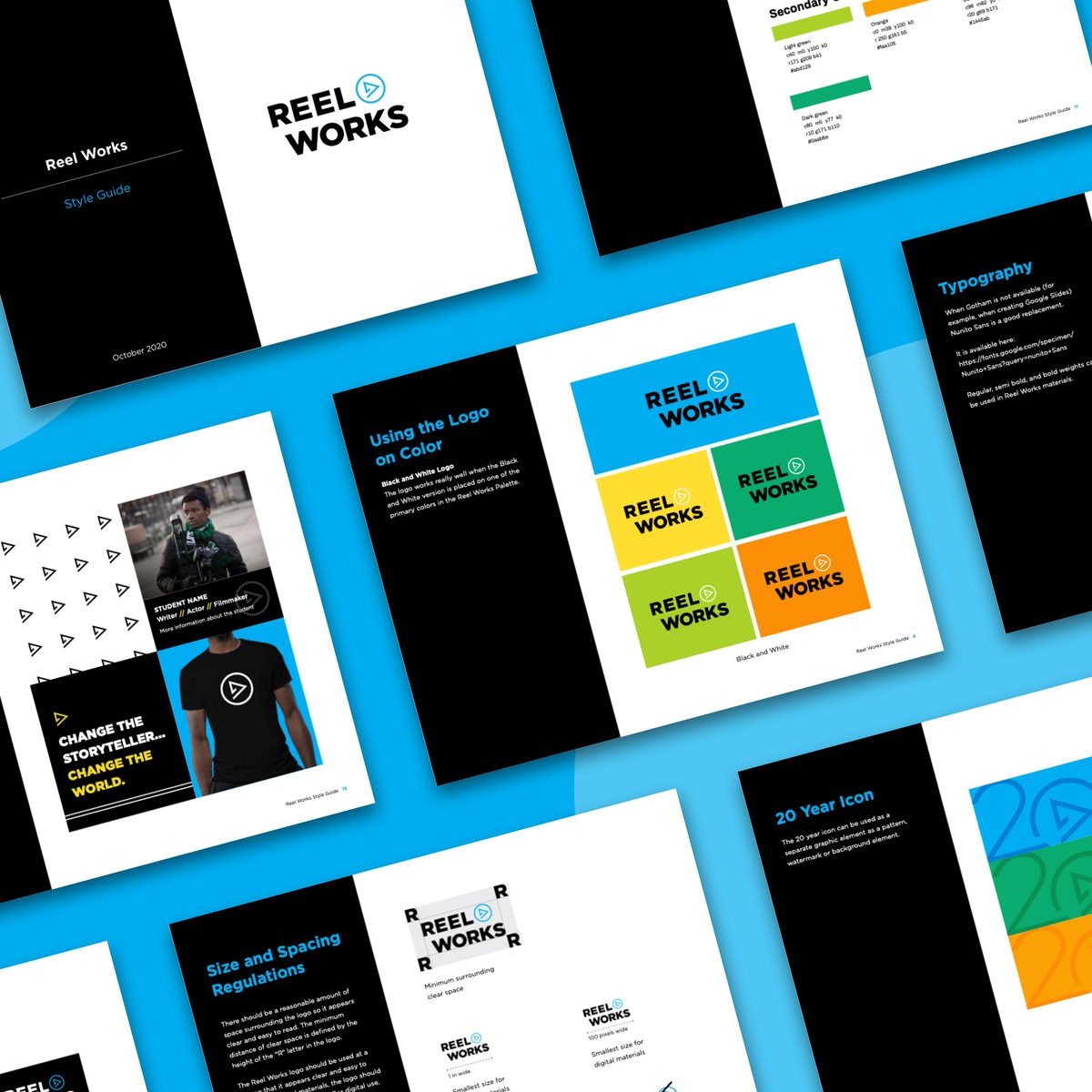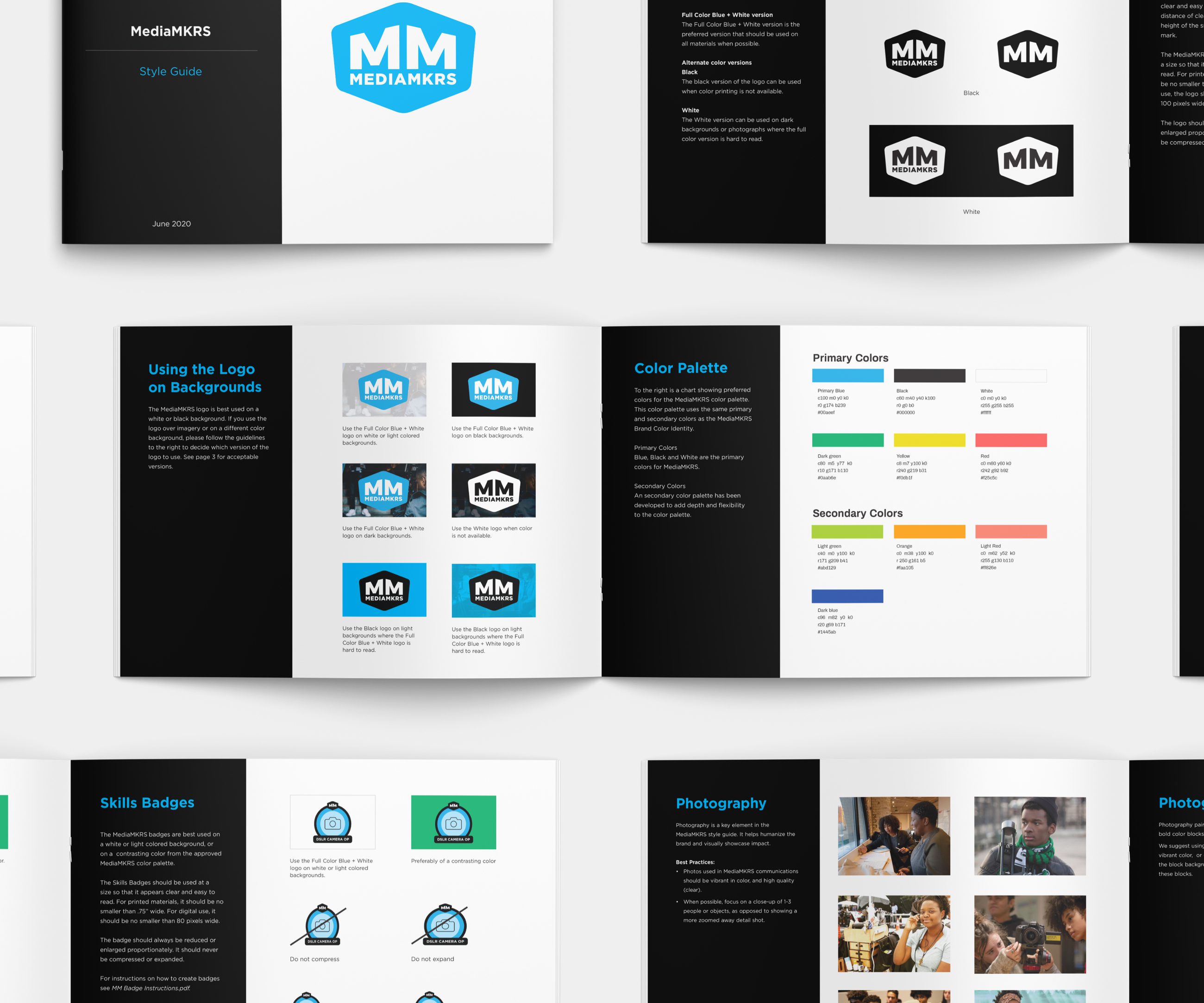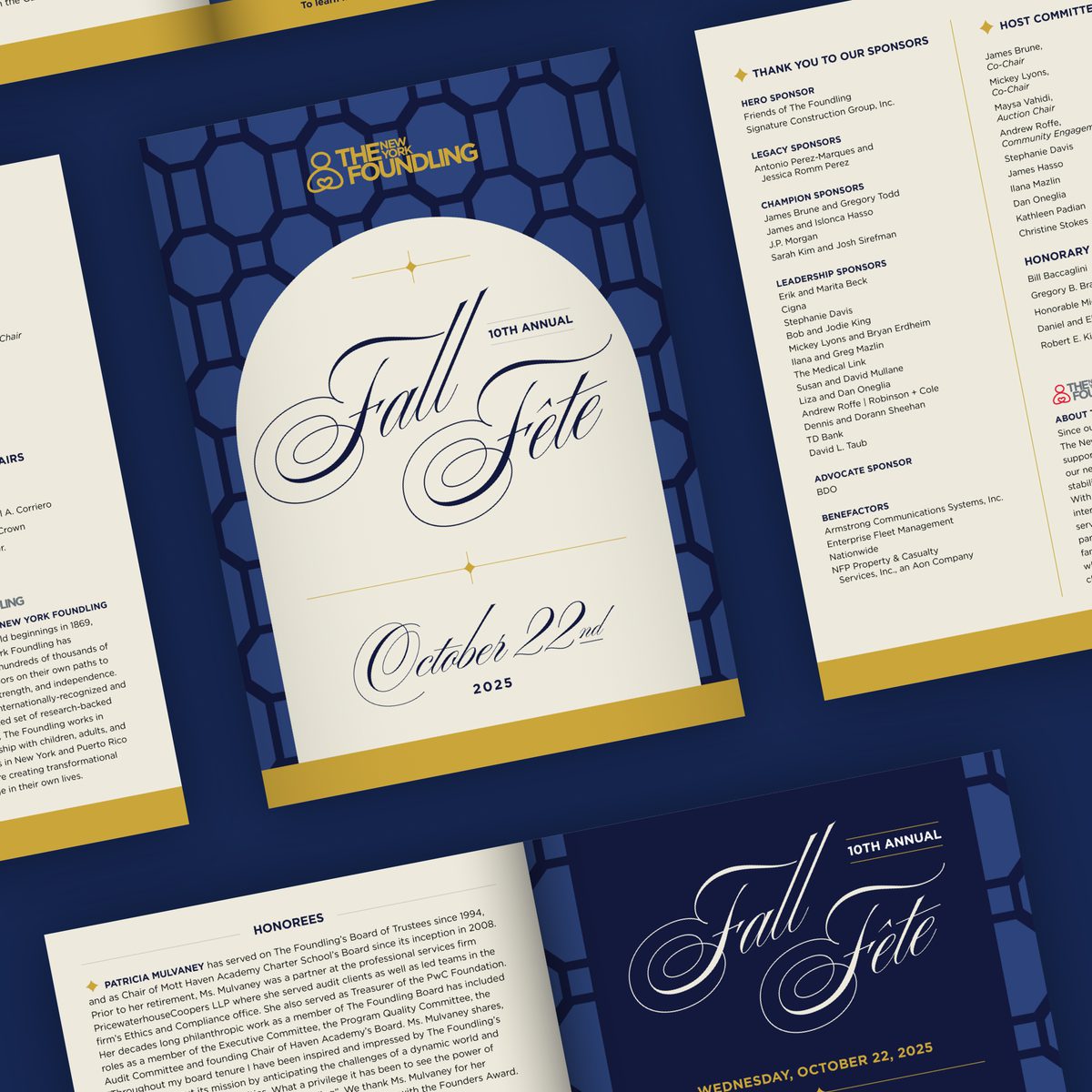- Expand Your Marketing and Outreach

- Expand Your Marketing and Outreach
What are brand guidelines for nonprofits and how can they help?
We’ve never met a nonprofit leader who wouldn’t agree that brand consistency is important. When you brand is expressed well, everywhere it needs to be, it inspires confidence and builds trust.
How does an organization get consistent with their brand expression? Are there any tools or strategies that can help an organization do this?
We always recommend having brand guidelines. A resource that details key elements of brand expression and the dos and dont’s around them. This is an important tool to have.
Brand guidelines are also named Brand Kits or Brand Style Guides. For the purposes of this article, we will use “brand guide”. Learn more about brand guides and how they can help you. Also, If you don’t have the resources to have these professional created, we share some tips to DIY it.
The essence of a brand guide
Imagine your brand as a person. Individuals have unique traits, and similarly, your brand has its own personality, tone, and style. A brand style guide is the DNA of your organization's identity. It's a comprehensive manual that details how your brand presents itself to the world. Depending on the scope of your guide it can cover everything from logos to colors to words. Its goal is to promote consistency and cohesion across all platforms and touchpoints.

Visual brand style guide created by us for MediaMKRS detailing logo, colors, typography, and photography usage.
Types or sections of brand guides
There are different expressions of your brand that your guide may cover. The most common for nonprofits include your visual style, core messaging, and editorial style.
- Visual Style: A visual style guide details all visual elements like logos, colors, and typography. It outlines how they should be (or should not be) used. It will address which version of your logo to use on a dark background color vs a light one. What is the proper spacing around your logo. Where your tagline is positioned alongside your logo. The fonts you should use, your colors, and the types of imagery you need.
- Core Messaging: A messaging guide details all your key messaging elements. It can include your tagline, core messaging statement or 30 second elevator pitch. Your mission and values are often included. It might define your audiences needs and how you address them.
- Editorial Style: This aims to guide all written content. It details the voice and tone of your writing and often includes samples. It may detail reading level targets, key words or phrases, and specific grammar styles. Whether writing for the web, social, or direct appeals it aims to help your brand have a consistent voice through words.
How a brand guide helps you be more consistent
A documented brand guide is a resource to support both your staff and any external partners. It should serve anyone who is doing brand related work.
Empowering internal teams
A brand guide is an invaluable tool for your team. It serves as a north star, guiding everyone from communications to fundraising. It's a resource for every presentation, report, or campaign to reflect your brand's essence. It's not only about maintaining consistency. It's about empowering your team to communicate well. Applying the guide will foster confidence and ownership in your brand's expression.
Engaging external Partners
Think about all the times you collaborate with external partners, freelancers, or vendors. Your brand guide will help them understand your brand. Partners gain efficiency as the guide will help them get on the same page with you. As a blueprint it can result in new assets that are on point with less effort.
So you want to DIY your brand guide
Often brand guides are created when organizations work with partners. When we are engaged for our branding services for example we often create a visual style guide. If working with a communications firm or doing a larger brand study effort, you might get a messaging and editorial brand guide alongside your visual guide.
But what if you wanted or needed to DIY a brand guide. Here are some tips and resources to help you.
- Research and Collect Examples: Before you start, look at style guides from other organizations. Many nonprofits share their style guides online. This can give you a sense of what you might want to include in your own guide. Keep in mind many of the guides you’ll find publicly are from larger organizations. Their guides can be rather robust and more than what might be useful for a smaller organization.
- Focus on Key Elements: For a small nonprofit, it's important to focus on the essentials. Start with the most critical elements like your logo usage, color palette, typography, and key messaging. As your organization grows, your style guide can evolve and expand.
- Use Templates and Tools: There are numerous free and paid templates available online that you can use as a starting point. Websites like Canva offer free brand style guide templates that are customizable. There are even templates on tools like Notion to create your guide. A google search for these and more will reveal a wealth of services and resources to help.
- Seek Feedback: Share drafts of the style guide with your team and possibly external audiences (like volunteers, beneficiaries, or external partners) to get feedback. This ensures that the guide is practical and aligns well with how others perceive and work with your brand.
- Make it Accessible and Update Regularly: Ensure that your style guide is easily accessible to your team and any external partners. Also, remember that your brand might evolve, so revisit and update the style guide periodically.
- Organize Related Assets: Be sure to have your logo files and other related brand assets organized and well named. You want to make it easy for you to access and share them with partners when needed.
Documenting your brand is an important step towards consistency and feeling confident
The first step towards streamlining your way towards brand expression consistency is documentation. A well done brand guide unifies your internal and external team. It saves time in the way it answers the foundational questions about your brand. A brand guide shifts your content and communication focus. You can rely on the guide for what needs to be consistent and work on the uniqueness of the communications or assets you are producing.
As your organization grows and evolves, your brand style guide will be a constant. It will help keep your message clear, your mission visible, and your impact resonant.
If you have any questions about brand guides please don’t hesitate to contact us.
More Articles
- Expand Your Marketing and Outreach
A thoughtful approach to nonprofit event branding
- Expand Your Marketing and Outreach
Expert-backed tips to boost donations through your website
Mightier Newsletter
Join our community of nonprofiteers and the partners that support them. Our monthly newsletter includes resources with small and mighty teams in the social sector in mind – sharing tips to help with content creation, website use, marketing, and more.
SubscribeBrought to you by MOD-Lab
At MOD-Lab, we're the thoughtful design partner for small teams like yours doing big things in the social sector. We create memorable branding, design materials, and websites that showcase the quality of your work and reflect your true impact.


